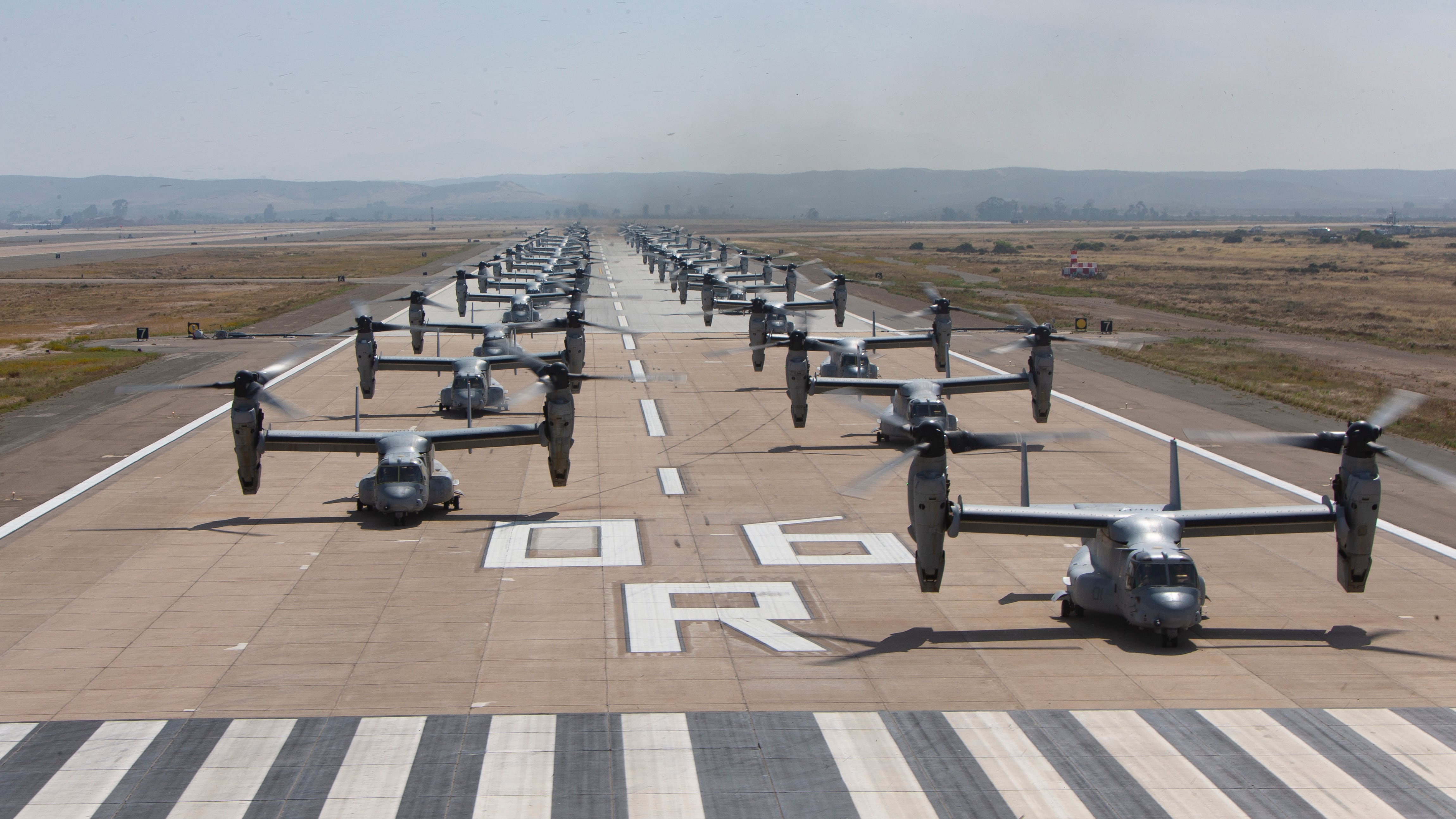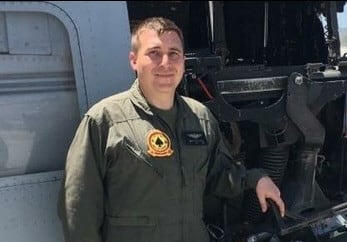No one is at fault for the death of Navy Lt. James A. Mazzuchelli, according to a command investigation, who was killed when a tail rotor blade of a UH-1Y Venom struck his head, cutting through his helmet and mounted night vision device.
When Mazzuchelli “unintentionally stepped into the spinning rotor” in February 2018 the blades cut a nearly foot long laceration in his head that resulted in “irreversible brain damage,"according to the investigation.
But the investigation, obtained by Marine Corps Times through a government records request, revealed some lapses in knowledge of medical emergency response procedures at the Camp Pendleton, California, flight line.
It was nearly 15 minutes after Mazzuchelli was struck by the rotor blade before Camp Pendleton, California, fire and emergency medical arrived on scene — an investigator noted that the time it took to call emergency services appeared “excessive.”
RELATED

Confusion over who to call, and how to get emergency services to the flight line appeared to play a role in delaying Mazzuchelli’s arrival to a higher echelon of medical care at Scripps Memorial Hospital in La Jolla, California.
“Although military aviation operations are inherently dangerous, the loss of any service member weighs heavy on the hearts of the 3rd MAW [3rd Marine Aircraft Wing] family," a 3rd MAW spokesperson told Marine Corps Times.
"3rd MAW will continue to refine our safety procedures to mitigate the risk of fatal accidents taking place in the future,” the spokesperson said.
Mazzuchelli, a flight surgeon assigned to Marine Light Attack Helicopter Squadron 267, was struck by a tail rotor blade at approximately 6:07 p.m. on Feb. 21, 2018.
Calls to Pendleton’s provost marshal’s office didn’t go out until 6:14 p.m., and 911 wasn’t called until 6:16 p.m., the investigation revealed.
Mazzuchelli and four other crew members of the UH-1Y Venom were reading for a training exercise the evening of the mishap.
Maintenance and air crew members with HMLA 267 appeared confused over who controlled the gate to the flight line and spot of Mazzuchelli’s accident. A call to the air station’s provost marshal’s office revealed that office didn’t have access to open the gate. A Marine with access to the gate was then quickly identified and posted.
But, the base’s fire department and emergency services were delayed several minutes by poor directions, and confusion over the building number near where the accident occurred and the right gate to enter the flight line.
The investigation noted that the closest emergency response team that could have responded to the mishap was the air station’s aircraft and firefighting unit, but they were never called.

“All units need to be aware of the most expeditious means of summoning emergency services," Col. Matthew Mowery, the former commander of Marine Aircraft Group 39, wrote in the investigation.
Moreover, when Mazzuchelli was struck, there was some confusion over how to treat and render first aid to the Navy lieutenant’s head wound. A sergeant expressed “some hesitation in applying gauze over exposed brain matter,” the investigation reads.
A Marine lieutenant and sergeant bandaged the back of Mazzuchelli’s skull to stop the bleeding.
At times while Mazzuchelli was being treated, a corporal noted he showed signs of breathing and was “somewhat responsive.”
Mazzuchelli was placed in the back of an ambulance at 6:27 p.m., and two minutes later the emergency crew was informed to meet up with Pendleton’s air ambulance located at the base naval hospital.
By 6:55 p.m. Mazzuchelli was on his way to the Scripps hospital where he underwent a craniotomy — a surgical procedure to expose the brain.
Mazzuchelli had a 27 centimeter laceration to his head and suffered from “extensive brain damage," according to details in the investigation. He was placed in intensive care and was pronounced dead nearly three days later on Feb. 24, 2018.
Despite some of the lapses that delayed emergency services from arriving on scene, the investigation said 'little could have been done" to save the Navy lieutenant’s life.
Following the mishap, Mowery directed his safety department to develop reference guides to outline emergency procedures, and coordination has been made for the air station’s fire and aircraft rescue to brief duty standers and supervisors on requesting emergency services.
The investigation described the accident as an “unfortunate mishap," and no misconduct among personnel was cited.
Mazzuchelli was hit by the blades when he walked around the back of the aircraft and “traveled through the arc of the tail rotor” as the number one engine was powered up, according to the investigation.
But air crew members who spoke to an investigator did say that it was not a “normal procedure” to walk behind the tail rotor, and that crew are trained not to do that.
There was some minor damage to the aircraft as a result of the incident. Two of the four tail rotor blades have markings from striking Mazzuchelli’ helmet and night vision goggles.
DaCid Cheers, Mazzuchelli’s stepfather, told Action Jax News that his stepson died doing what he loved.
“Our deepest empathy goes out to the Mazzuchelli Family and those affected by this tragedy,” the 3rd MAW spokesperson said.
Shawn Snow is the senior reporter for Marine Corps Times and a Marine Corps veteran.




